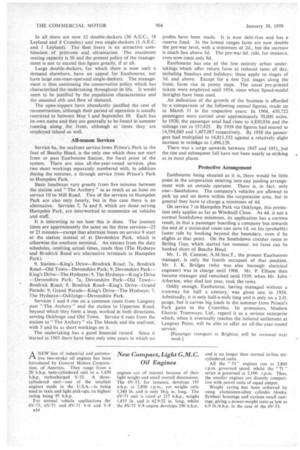New Compact, Light G.M.C. Oil Engines
Page 152

If you've noticed an error in this article please click here to report it so we can fix it.
ANEW line of industrial and automotive two-stroke oil engines has been introduced by General Motors Corporation, of America. They range from a 20 b.h.p. twin-cylindered unit to a 1.650 b.h.p. turbocharged V-32. A threecylindered unit—one of the smallest engines made in the U.S.A.—is being used in taxis and light pick-ups, its highest rating being 97 b.h.p.
For normal vehicle applications the 6V-53, 6V-71 and -8V-7l V-6 and V-8 B14 engines are of interest because of their light weight and small overall dimensions. The 6V-53, for instance, develops 195 b.h.p. at 2,800 r.p.m., yet weighs only 1,340 lb. and is only 34Ain. long. The 6V-71 unit is rated at 217 b.h.p., weighs 1,855 lb. and is 42 9-32 in. long, whilst The 8V-71 V-8 engine develops 290 b.h.p., and is no longer than normal in-line sixcylindered units.
All the " 53 " engines run at 2.800 r.p.m. governed speed, whilst the "71 " series is governed at 2,100 r.p.m. Thus, the smaller engines are directly competitive with petrol units of equal output.
Weight saving has been achieved by using aluminium-alloy cylinder blocks, flywheel housings and various small castings, giving a power-weight ratio as low as 6.9 lb./b.h.p. in the case of the 6V-53.




































































































































































































